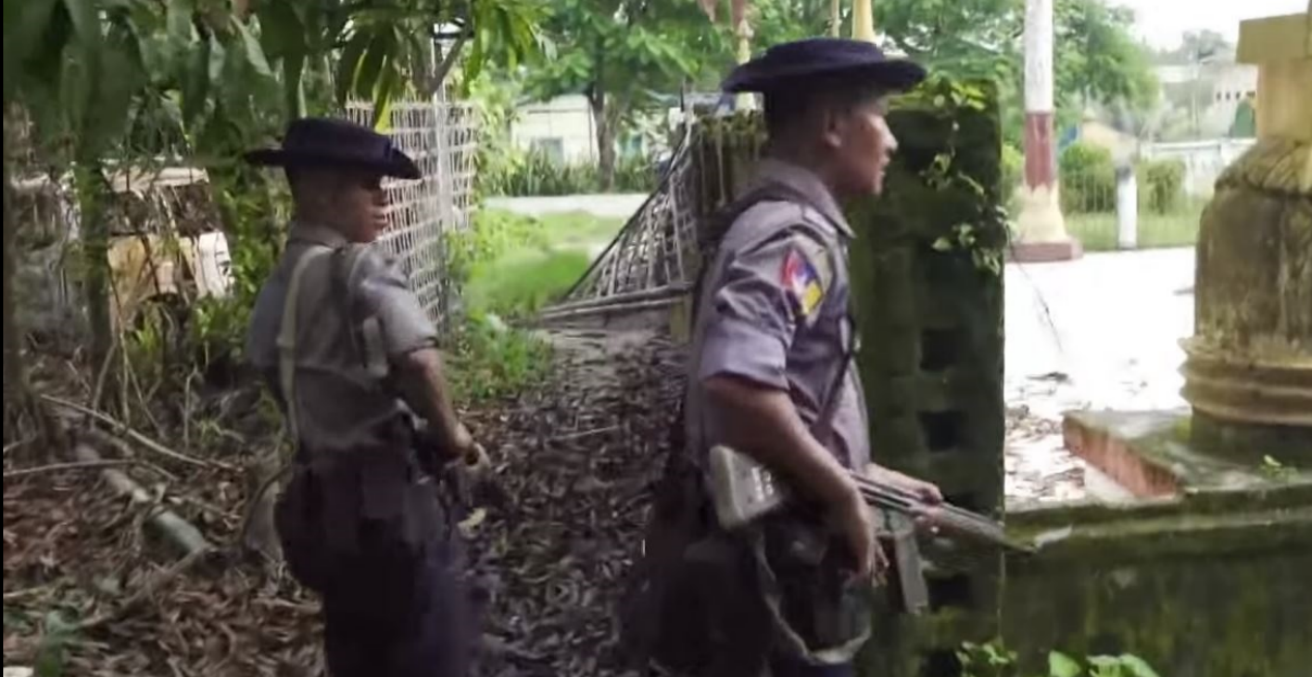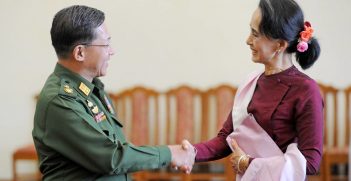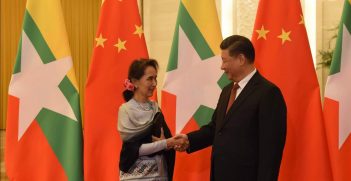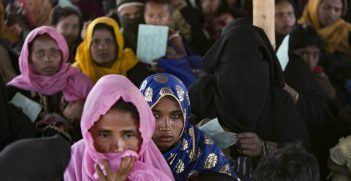Myanmar's Intelligence State

Both Aung San Suu Kyi’s government and the armed forces know that their survival is threatened more by disunity and domestic instability than by any international developments.
Over the past two centuries, Myanmar (known before 1989 as Burma) has experienced almost every major system of government, from an absolute monarchy to a parliamentary democracy. For most of this period, but particularly under authoritarian governments between 1962 and 2011, these administrations were supported by powerful intelligence services. Indeed, rather than being a ‘police state’, as Myanmar has often been called, the country could more accurately be described an ‘intelligence state’.
When Myanmar was under colonial rule (1824-1948), the British relied on intelligence provided by their civil and military police forces to anticipate and respond to challenges to political, economic and social stability. As the country was conquered in three stages, a network of police posts was established, charged with wide reporting responsibilities. Soon after the fall of Mandalay in 1885, an Intelligence Branch was formed. In 1906 it was absorbed by the Criminal Investigation Department and later became Special Branch.
Most British and Indian army units were withdrawn from Myanmar after the colony was ‘pacified’ in the 1890s. The few that remained had their usual complement of military intelligence officers but there were no real external threats and internal security remained the responsibility of the police forces. A Burma Defence Bureau was created in 1937, after the perceived failure of the police to warn of the 1930-32 Saya San rebellion, but it lacked resources and had barely begun operations before the outbreak of World War II.
During and immediately after the war, the Japanese, puppet Myanmar and British administrations drew on intelligence reports to stay informed, but the civil organisations involved were always subordinate to the relevant military authorities. After Myanmar regained its independence in 1948, its fledgling intelligence apparatus did not play a significant part in U Nu’s democratic government, although in 1951 he created a Bureau of Special Investigation to counter corruption and financial crimes.
The most significant development in this field occurred after the 1962 coup, when General Ne Win increased the role, size and capabilities of the Military Intelligence Service (MIS). It quickly became a powerful arm of the regime.
Between 1962 and the creation of a quasi-civilian government in 2011, successive regimes depended on the country’s intelligence apparatus. The dominance of the MIS limited the police force’s intelligence role, but there were also small investigative units in the Immigration and Customs portfolios. After 1964, all their activities were coordinated by a National Intelligence Bureau. The MIS collapsed in 2004, however, when Prime Minister Khin Nyunt was arrested and the military intelligence service purged.
Myanmar’s intelligence apparatus has still not fully recovered from that shock. However, efforts have been made by agencies to develop their capabilities and respond to changing circumstances. Despite the 2011 handover of power, and the election of Aung San Suu Kyi’s government in 2015, intelligence continues to play an important part in Myanmar’s civil affairs. It has also remained an essential tool of the armed forces which, thanks to the 2008 constitution, remain the country’s most powerful political institution.
Reliable information is scarce, but since 1948 Myanmar’s intelligence apparatus has been marked by four main features.
The first is the dominance of the military intelligence service, formally known since 1969 as the Directorate of Defence Services Intelligence (DDSI), after 2001 as the Office of the Chief of Military Intelligence, and since 2004 as the Office of the Chief of Military Affairs Security. Despite the transfer of power from a military dictatorship to a quasi-civilian government in 2011, the country’s intelligence apparatus still answers, directly or indirectly, to the armed forces commander in chief.
Second, Myanmar’s intelligence culture has been characterised by a ruthless dedication to the preservation of the Union (as envisaged by the armed forces). This stems in large part from the military leadership’s intense nationalism, its pervasive sense of vulnerability and felt need to maintain control. In the name of the ‘three national causes’ (stability, unity and sovereignty), the key intelligence agencies have exercised wide powers, including blanket surveillance of the population, arbitrary arrest and torture.
Third, due largely to Myanmar’s economic problems and low levels of technological development, its intelligence agencies have relied heavily on human, rather than technical, sources. For decades, the country’s signals and imagery intelligence capabilities were very low. According to unconfirmed reports, this situation has gradually changed since 1988 as more resources have been put into intelligence collection, more sophisticated equipment has been acquired and commercial options explored.
Fourth, the main focus of Myanmar’s intelligence effort has been on domestic issues. This not only includes challenges to the government from ethnic armed groups and political activists, but also ‘economic insurgents’ and potentially disruptive elements of civil society. The security forces too are monitored closely. Given their preoccupation with internal stability, successive governments have dedicated relatively few resources to foreign intelligence collection and analysis.
Military intelligence officers have been posted abroad, usually to diplomatic missions, but their remit appears to have been primarily to observe and report on expatriate Myanmar communities. The task of gathering strategic intelligence was given a lower priority. Broadly speaking, external developments were left to the Ministry of Foreign Affairs and, from 1994 to 2004, to the DDSI’s Office of Strategic Studies. As far as is known, Myanmar has never had a separate foreign intelligence service.
Since 2011, Myanmar’s intelligence agencies appear to have reached out more to their foreign counterparts, both in the region and further afield. However, Naypyidaw is now facing the prospect of a return to international isolation and punitive sanctions, as the government and armed forces face charges of genocide against the Muslim Rohingyas. Relationships forged with ASEAN and China will doubtless survive but a casualty of its renewed pariah status may be developing intelligence contacts with Western countries.
Even as Myanmar faces new external pressures, it is unlikely that the priority currently given to internal security will change. Both Aung San Suu Kyi’s government and the armed forces know that their survival – and, in their view, the country’s survival – is threatened more by disunity and domestic instability than by any international developments. This will ensure that the country’s intelligence apparatus will continue to be given a high priority, and will remain under the influence of the armed forces.
Andrew Selth is Adjunct Associate Professor at the Griffith Asia Institute in Griffith University. His most recent publication is ‘Myanmar’s Armed Forces and the Rohingya Crisis’.
This article is published under a Creative Commons Licence and may be republished with attribution.





